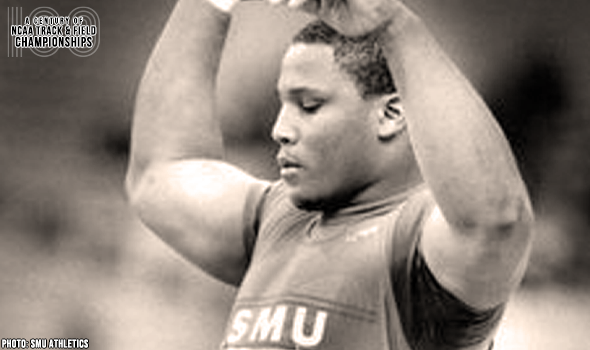
Carter’s Shot Put Prowess Was Legendary
In January 1983, Michael Carter of SMU picked up a shot for the first time in 18 months.
By June of that same year, he was looking to regain the national title in that event at the NCAA Division I Outdoor Track & Field Championships in Houston.
Carter – who had won in 1980 and 1981 – wasn’t able to try for a third in 1982 when he missed the entire indoor and outdoor seasons recovering from a football injury he suffered in October 1981. He was the starting nose tackle for the Mustangs, who were undefeated in 1982 and only lost one game in 1981.
After the cast on Carter’s right knee came off in January 1982, Carter showed his competitive side, telling John Eisenberg of the Dallas Times-Herald: “As soon as I get the go-ahead, I’m going to bust my butt like I never did before. I’m going to make my legs stronger than they ever have been.”
Meanwhile, another strong throwing figure emerged in 1982 with Carter’s absence – Oregon’s Dean Crouser, who not only won the NCAA shot that year but the discus as well. And the day before the 1983 NCAA shot final, Crouser looked great, repeating his discus win with a meet-record 65.88m (216-2) while Carter was 10th (Carter placed runner-up two years earlier in 1981).
Carter made this shot final his from the beginning. He took the immediate lead with a 20.22m (66-4¼) effort in Round 1 and then followed with the winning have of 20.90m (68-7) – his best since a pre-injury 21.25m (69-8¾) that set an NCAA Indoor meet record in 1981. Crouser, the defending champion, finished third behind John Brenner of UCLA.
As it turns out, Carter’s points were crucial to SMU, which eked out a two-point victory over Tennessee to complete a sweep of indoor and outdoor team crowns.
“I knew in the back of my mind that Crouser could hit a big one at any time,” Carter said after the meet. “I tried to improve after the second throw, but I couldn’t. I wanted to keep my string alive; my goal is eight straight.”
At this point, Carter had six national titles in the shot put – three each indoor and outdoor. He got to seven with his indoor victory in 1984, but his attempt for eight was part of an epic duel with Brenner that will be the subject of its own forthcoming moment in this series.
Alas for track & field fans, Carter’s last shot put competition came when he earned the silver medal at the Los Angeles Olympics. He then joined the NFL’s San Francisco 49ers, with whom he was part of three Super Bowl champion teams.
Michael’s two daughters also won NCAA titles – Michelle (Texas), the 2006 indoor shot put champion; D’Andra (Texas Tech), the 2009 discus champion – making the Carters the first family with three NCAA Division I track & field champions. In 2016, Michelle earned the family’s first Olympic gold medal, also becoming the first American woman to win the shot put.
The NCAA and collegiate track & field will mark a momentous milestone in the spring of 2021 -- the 100th anniversary of the NCAA Championships and with that, the NCAA Track & Field Championships. In June 1921, the University of Chicago hosted the first track & field championships in NCAA history.
This point can’t be emphasized enough: Not only was the event the first for NCAA track & field, but the first championships for any sport under the sponsorship of the NCAA.
To celebrate, over each of the next 365 days, the U.S. Track & Field and Cross Country Coaches Association (USTFCCCA) will celebrate moments, student-athletes, and coaches that have made a century’s worth of championships special. From humble beginnings to important historical milestones to the modern-day, collegiate track & field has evolved with the American society.
The 2021 edition of the NCAA Division I Outdoor Track & Field Championships begin with preliminary round action on May 27-29 in Jacksonville, Fla., and College Station, Texas. The championships final site and culmination of the celebration is slated for June 9-12, 2021 at the newly rebuilt Hayward Field in Eugene, Ore.
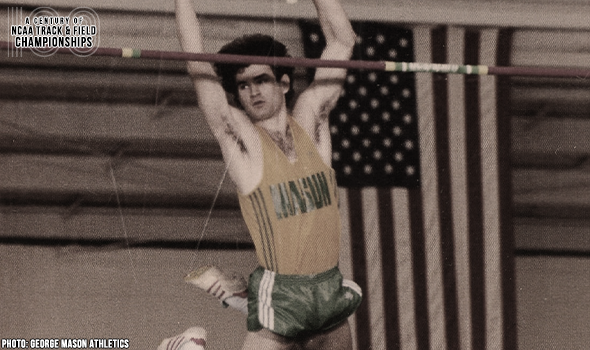
Bagyula Boasted Incredible Pole Vault Prowess
Istvan Bagyula won three consecutive pole vault titles at the NCAA DI Outdoor T&F Championships between 1990 & 1992. He was the first to clear 19 feet (5.80m) in 1991.

Rotich Went Back-To-Back-To-Back In Steeple
Anthony Rotich won three consecutive steeplechase titles, doing so from 2013 to 2015. His 8:21.19 from 2013 is the ninth fastest mark in meet history.

Lawrence Twins Doubled Down On Outdoor Crowns
Twins Shadae & Shardia Lawrence both won titles at the NCAA Division I Outdoor T&F Championships: Shardae in the discus (2017); Shardia in the triple jump (2019).
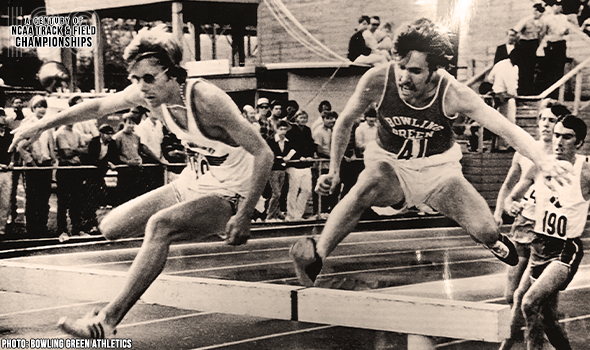
Sink Steepled Into The Record Book
Sid Sink won back-to-back titles in the steeplechase at the NCAA Division I Outdoor T&F Championships in 1970 & 1971. He set meet records in each of those years.
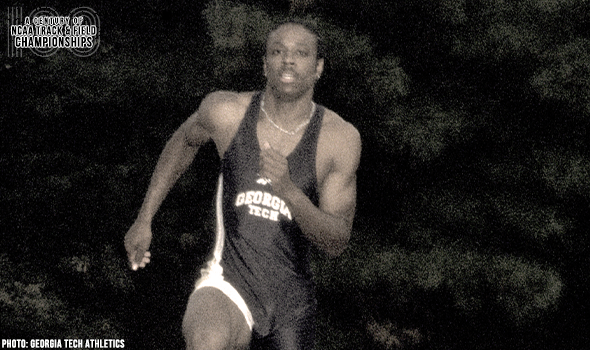
Georgia Tech’s Taylor Triumphed In 1998
Angelo Taylor won the 400 Hurdles and doubled back to anchor the winning 4×400 relay team at the 1998 NCAA DI Outdoor Track & Field Championships.

Tennessee’s Skinner Set Javelin MR In 1970
Bill Skinner set a meet record in the javelin of 82.49m (270-8) at the 1970 NCAA Division I Outdoor T&F Championships.

Turner Left No Doubt In 800 Meters
Inez Turner won the 800 meters at the 1995 NCAA Division I Outdoor T&F Championships by 2.24 seconds for what is still the largest margin of victory in meet history.

Cheruiyot Won By Slim Margin In 1989
Kip Cheruiyot beat teammate Peter Rono by 0.03 seconds in the 1500 at the 1989 NCAA DI Outdoor T&F Championships. It was the closest margin of victory since the NCAA adopted FAT.
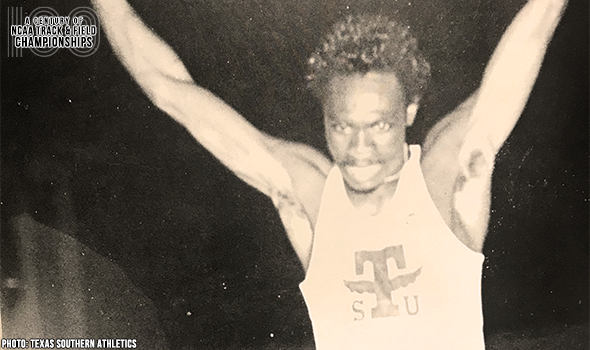
Emordi Led Texas Southern 1-2 LJ Finish In 1987
Paul Emordi led the only 1-2 finish by teammates in the men’s long jump at the NCAA Division I Outdoor Track & Field Championships in 1987. Emordi won with a leap of 8.25m (27-0¾).

Anchor Down: Tolbert Set 400H CR In 1997
Ryan Tolbert set a collegiate record in the 400 Hurdles of 54.54 at the 1997 NCAA Division I Outdoor T&F Championships. Tolbert also finished third in the open 400!

